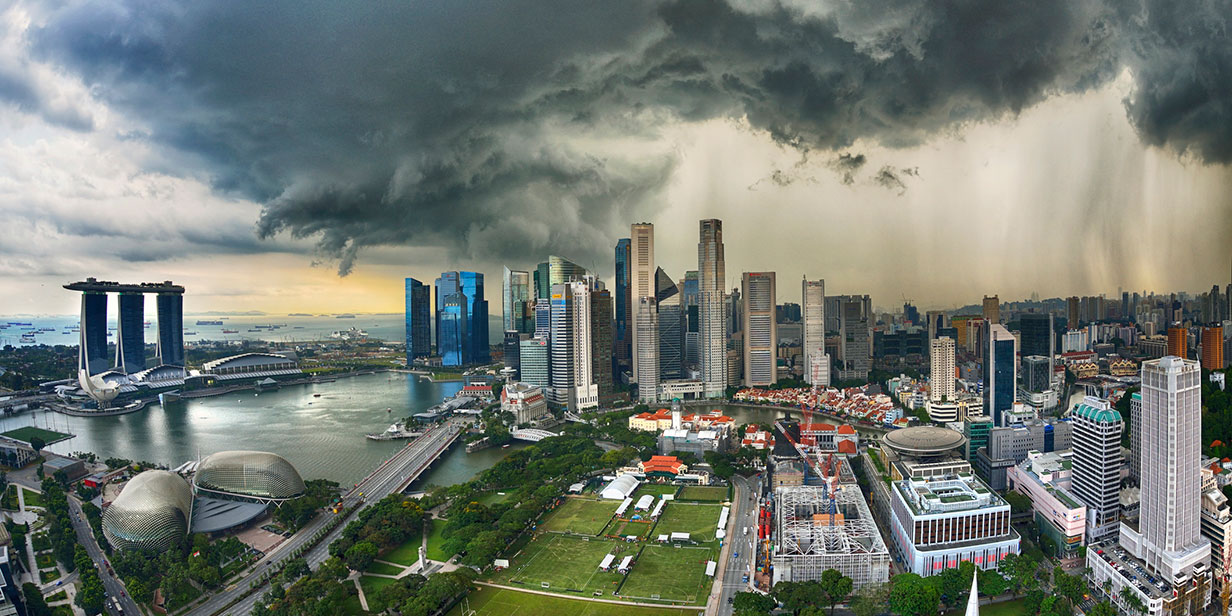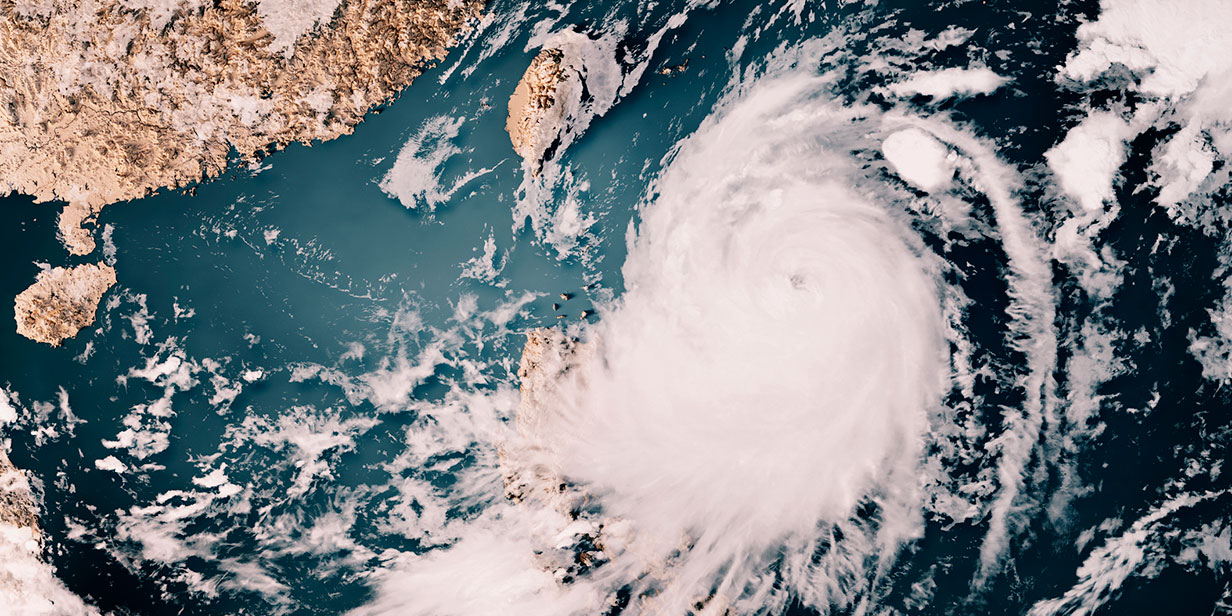Weathering the storm
As Asia braces for the impact of the annual monsoon and typhoon seasons, the case for resilience grows stronger.

Asia is no stranger to climate risk. Its geography and climate patterns make it particularly vulnerable to flooding, typhoons and earthquakes. Much of these risks are inherent, compounded by increasing urbanisation in tune with accelerating economic development.
The annual monsoon season that brings vital rainfall to countries like Thailand and Malaysia between May thru October regularly triggers devastating floods, impacting communities and businesses. In these situations, heavy rainfalls, overwhelmed drainage systems and increasing pressures on flood mitigation infrastructure contribute to heavy financial loses. Elsewhere in the region, the Philippines, South Korea and Hong Kong frequently bear the brunt of typhoons from July to September, enduring widespread destruction.

The Philippines’ location in the western Pacific Ocean exposes it to an average of 20 typhoons per year, including some of the most powerful tropical cyclones recorded anywhere on the planet. This included 2022’s Typhoon Rai, which caused US$215 million in losses to agricultural crops and farmland, and affected Vietnam, Macau, Hong Kong and mainland China as well. Meanwhile in 2023, Typhoon Koinu (above) forced the closure of Hong Kong's stock exchange and generated insurance claims in excess of US$500 million. Flooding in Malaysia in the same year caused significant damage to public assets and infrastructure with the agriculture sector suffering millions in losses.
The heat is on
But wait – there’s more. In addition to these storm-related perils, Asia’s tropical countries are experiencing the impact of higher temperatures. Heatwaves can have significant impact on industrial property, leading to overheating, equipment malfunction and electrical hazards. Droughts also disrupt agricultural production, straining water resources and contributing to increased risk of wildfires. Singapore's temperature topped 37°C in May 2023, with the nation-state bracing for further increases. Thailand registered its highest temperature in April 2023, recording 45.4°C in the western province of Tak.
As a disaster-prone region, Asia has long dealt with the combined social and economic blows of high-impact weather events. Research from Aon noted that economic losses associated with natural catastrophes in 2023 hit US$65 billion in Asia Pacific alone. As the world works to mitigate the increasing consequences of climate change, it comes as a surprise to many that a staggering 91% of the total losses in APAC were uninsured.
Taking on climate resilience
While insurance remains the important first layer in managing climate risk, it is becoming increasingly difficult to obtain full coverage for a property or asset without first demonstrating a commitment to mitigating climate risks posed by floods, typhoons and rising temperatures.
Where the impact of losses were once written down in the context of fast-growing businesses and economies, an increase in frequency and severity has seen the impact of infrastructure and supply chain losses treated with far greater urgency.

Companies that are exposed to the certainty of the next cycle of natural weather events are facing increasing regulatory and stakeholder pressures to evaluate and measure the value of these risks to their bottom lines. Investors are also placing greater emphases on businesses to develop long-term risk mitigation strategies to build greater resilience.
For many heavy industries in the region, the path to greater resilience begins with a thorough engineering-based assessment of their exposure to climate and other risks – where the impact on physical assets and supply chain are analysed through onsite inspections and relevant data is drawn from decades of studying losses. With FM, the resulting Climate Risk Report then informs the risk mitigation investments and actions needed to protect business continuity and ultimately improve stakeholder value.
“As a disaster-prone region, Asia has long dealt with the combined social and economic blows of high-impact weather events.”
At a physical level, these measures might then include relocating critical production lines to lesser risk-prone areas, installing wind-resistant roofing, or incorporating new site selection criteria for future developments. Often these measures require an additional financial investment, but may turn out to be critical in determining the physical and financial severity of a subsequent risk impact.
To some, increasing climate resilience can be overwhelming and may seem like an insurmountable challenge given the level of uncertainty. But for business decision makers, climate risk presents a clear choice between resilience and disruption. By opting for resilience, we can proactively address the growing impact of climate change and significantly reduce the exposure to business disruption and enhance the prospects of businesses across our region.
